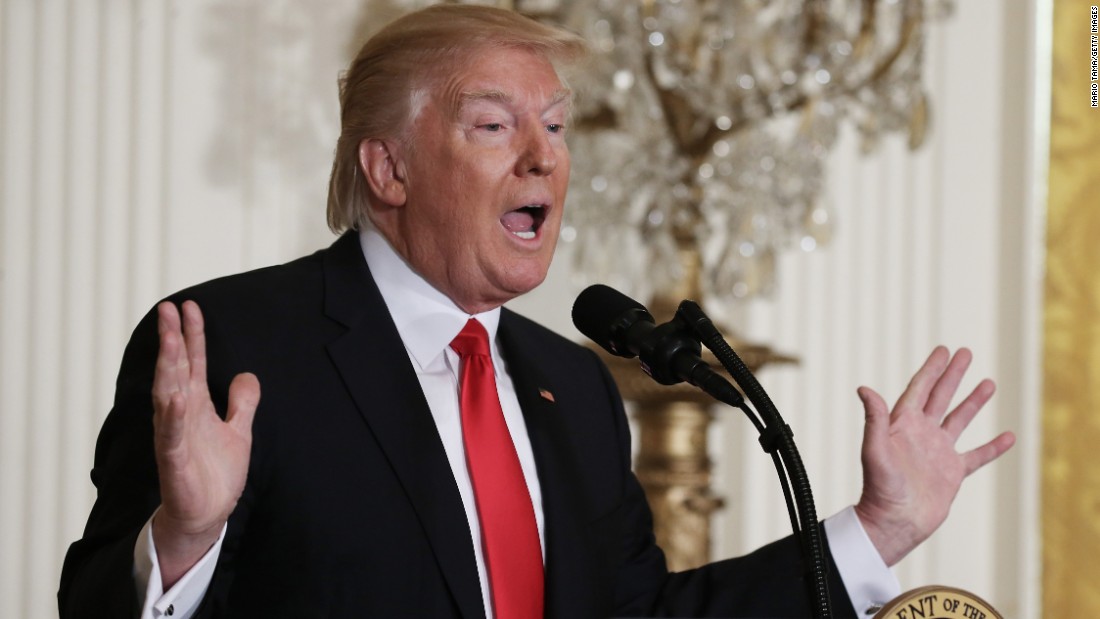Trump Press Conferences

Donald Trump’s press conferences, a recurring feature of his presidency, were a spectacle unlike any other. They became a platform for his often-controversial views, a stage for his signature bravado, and a constant source of news and headlines. From the fiery, unpredictable exchanges with the press to the frequent pronouncements on policy and politics, Trump’s press conferences were a unique blend of performance and policy.
Evolution of Trump’s Press Conferences, Trump press conference
The nature of Trump’s press conferences evolved throughout his presidency, reflecting the shifting political landscape and the growing media scrutiny he faced. Early in his tenure, they were characterized by a more direct and confrontational style, often marked by personal attacks on journalists and the media. As his presidency progressed, the press conferences became more scripted, with Trump relying heavily on prepared statements and a carefully curated narrative.
- Early Presidency: Trump’s early press conferences were marked by their unpredictable nature. He would often veer off script, launching into impromptu attacks on his political opponents or the media. These early events were frequently characterized by heated exchanges with reporters, with Trump often resorting to name-calling and personal insults.
- Mid-Presidency: As Trump’s presidency progressed, his press conferences became more structured. He began to rely more heavily on prepared statements, often reading from teleprompters and sticking closely to his talking points. While still prone to occasional outbursts, these events were generally more controlled and less spontaneous than their earlier counterparts.
- Late Presidency: In the final months of his presidency, Trump’s press conferences became increasingly rare. He often opted for alternative forms of communication, such as Twitter and televised interviews, to directly address the public. When he did hold press conferences, they were frequently dominated by his claims of election fraud and his efforts to overturn the results of the 2020 presidential election.
Historical Context of Press Conferences
Press conferences, a cornerstone of modern American democracy, have played a crucial role in shaping public discourse and holding government officials accountable. They provide a platform for journalists to ask questions, challenge officials’ statements, and disseminate information to the public.
- Woodrow Wilson: President Woodrow Wilson, in 1913, is widely credited with pioneering the modern press conference. He began holding regular meetings with reporters, marking a significant shift from the previous practice of presidents communicating with the press through written statements or intermediaries.
- Franklin D. Roosevelt: President Franklin D. Roosevelt, known for his “fireside chats,” utilized radio broadcasts to connect with the American public during the Great Depression. His frequent press conferences further cemented the practice of presidents engaging directly with the press.
- John F. Kennedy: President John F. Kennedy, known for his charisma and eloquence, transformed the press conference into a media spectacle. He was adept at using the platform to project his image and convey his message to the nation.
Comparison to Previous Presidents
Trump’s press conferences were a stark departure from the approach of many of his predecessors. While previous presidents have been known for their communication styles, Trump’s approach was marked by its unpredictability, confrontational nature, and frequent departures from traditional norms.
- Barack Obama: President Barack Obama, known for his calm and measured demeanor, often held press conferences that were more subdued and focused on policy issues. He was less prone to personal attacks on journalists and generally maintained a more professional tone.
- Bill Clinton: President Bill Clinton, known for his charisma and ability to connect with audiences, often used press conferences to build relationships with reporters and convey his message effectively. He was generally more willing to engage with questions and provide detailed answers.
- George W. Bush: President George W. Bush, known for his straightforward and often folksy communication style, often held press conferences that were more informal and conversational. He was generally more willing to answer questions directly and engage with reporters on a personal level.
The Trump press conference was a whirlwind of pronouncements, a spectacle of contradictions and theatrics. One question lingered in the air, a question that transcended the immediate chaos of the moment: who is moderating the next presidential debate? This question was more than just a logistical concern; it was a reflection of the nation’s unease, the deep sense of uncertainty that permeated every facet of the political landscape.
And in the midst of this uncertainty, the Trump press conference continued, a performance that offered no solace, only a deepening sense of unease.
Trump’s press conferences were always a spectacle, a chaotic symphony of pronouncements and denials, each one a microcosm of the larger American political drama. The theatricality of it all, the constant barrage of pronouncements, was oddly reminiscent of those nostalgic McDonald’s collectors meals, each one a fleeting moment of childhood joy, a fleeting reminder of a time before the world felt so fractured.
McDonald’s collectors meals , like Trump’s press conferences, were fleeting moments in time, captured in plastic and promises, forever destined to fade in the rearview mirror of history.
